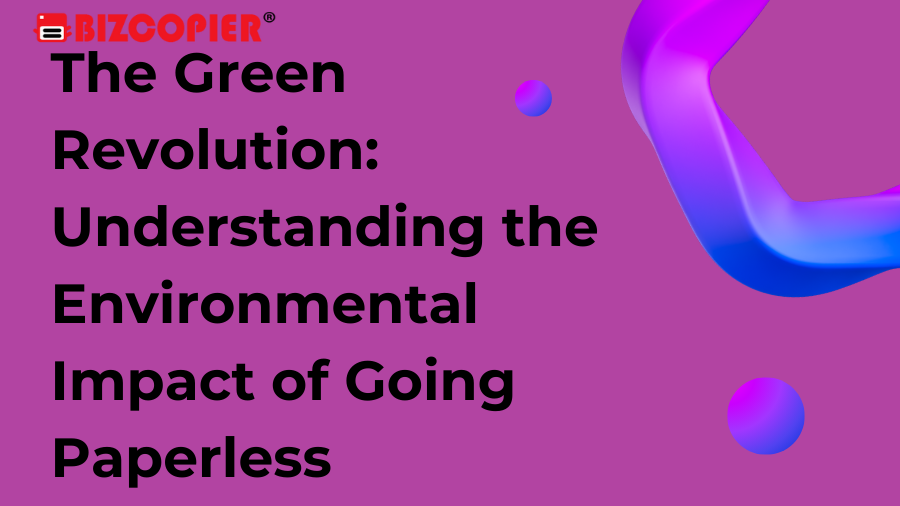Introduction
In a world increasingly focused on sustainability and environmental conservation, going paperless has emerged as a powerful way to reduce the environmental footprint of both individuals and organizations. This article explores the significant environmental impact of transitioning from paper-based workflows to digital, demonstrating how this shift can benefit the planet.
The Environmental Toll of Paper Production
Paper production is a resource-intensive and environmentally impactful process. Several key factors contribute to the significant environmental toll of paper production:
Deforestation: The primary raw material for paper, wood, is sourced from forests. Unsustainable logging practices contribute to deforestation, habitat destruction, and loss of biodiversity.
Water Usage: Paper production requires vast amounts of water, and the industry is known to pollute water sources with chemicals used in the pulp and papermaking process.
Energy Consumption: Manufacturing paper demands substantial energy input, mainly in the form of fossil fuels, contributing to greenhouse gas emissions.
Waste Generation: The paper industry produces substantial waste, including wood chips, pulping chemicals, and large amounts of paper scrap.
Transportation: The transportation of raw materials and finished paper products adds to the industry’s carbon footprint.
The Environmental Benefits of Going Paperless
Reduced Deforestation:
- Going paperless means using fewer trees for paper production, which can help preserve forests and their ecological diversity.
Lower Water Usage:
- Digital workflows eliminate the need for water-intensive paper production, reducing pressure on water resources.
Energy Savings:
- The energy required to produce paper is far greater than that needed for digital document management. Going paperless results in substantial energy savings.
Waste Reduction:
- Digital processes generate less waste compared to paper-based workflows, reducing landfill contributions.
Emissions Reduction:
- Decreasing paper production lowers greenhouse gas emissions, as the energy and transportation requirements associated with paper manufacturing are mitigated.
Additional Environmental Benefits
Less Transportation:
- Digital document sharing and storage eliminate the need to physically transport paper documents, further reducing the carbon footprint associated with transportation.
Remote Work:
- The shift to digital has facilitated remote work, leading to fewer commuters and reduced emissions from daily commutes.
Eco-Friendly Initiatives:
- Many businesses and governments are adopting eco-friendly practices by implementing paperless policies to reduce their environmental impact.
Eco-Consciousness:
- The move toward paperless operations encourages eco-conscious thinking, fostering a broader commitment to environmental sustainability.
Challenges and Considerations
While going paperless offers substantial environmental benefits, it is essential to consider factors such as data security, privacy, and digital waste. Safeguarding digital information and minimizing the environmental impact of electronic waste (e-waste) are important aspects of a successful transition.
Conclusion
Going paperless is more than a trend; it is a crucial step towards reducing our environmental footprint. By minimizing the demand for paper, we conserve forests, water, and energy, while also reducing waste and emissions. As individuals and organizations embrace digital document management, they contribute to a greener, more sustainable world and play a part in the ongoing effort to combat climate change and protect our planet for future generations.

